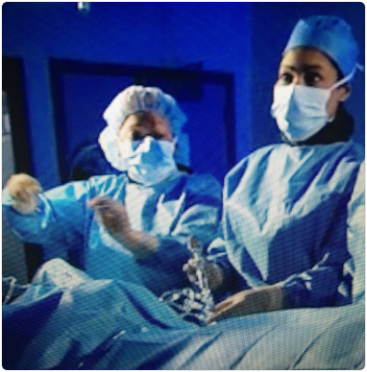Cardiac Catheterization

Diagnostic cardiac catheterization is an imaging procedure that is used to determine whether any heart arteries are blocked, the heart valves are functioning properly, the heart chamber blood pressures are normal, and the walls of the heart muscle move normally. It is typically used in conjunction with an angiogram, angioplasty, or stent procedure.
Board-certified interventional cardiologist Dr. Shawn Howell at Capital Cardiovascular Specialists in Washington, DC conducts cardiac catheterization in a cardiac catheterization laboratory (cath lab) at several local hospitals.
Under conscious sedation and local anesthesia, Dr. Howell inserts a thin plastic tube (catheter) through a vein or artery in the neck, leg, or arm to reach various heart chambers or blood vessels. An imaging technique records pictures of the heart while it beats. Once in place, the catheter can be used to inject a harmless dye to make the heart arteries visible in an X-ray (angiography).
An angiogram enables Dr. Howell to measure the blood flow and blood pressure in the heart chambers, which can indicate blockages in the coronary arteries. She may also perform an intravascular ultrasound in conjunction with angiography. By guiding an ultrasound probe through the catheter and into the coronary artery, Dr. Howell can get a cross section view and a close look at how plaque is forming.
Cardiac catheterization and angiography can help Dr. Howell diagnose heart defects, heart disease, heart enlargement, blood clots, coronary artery blockage, valve problems, aneurysms, or pulmonary hypertension.
Transradial Cardiac Catheterization
Dr. Howell is one of the few area interventional cardiologists who perform transradial cardiac catheterization — a procedure that allows access to the heart through the radial artery in the wrist. She also utilizes the traditional femoral approach (through the groin) to cardiac catheterization if necessary.
During a transradial cath procedure, patients are in a more comfortable position than with the femoral approach. Other benefits of the transradial approach include less blood loss and fewer complications.
After your cardiac catheterization, Dr. Howell will make a diagnosis and then educate you about your condition and treatment options.
Preparing for a Diagnostic Cardiac Catheterization
Before the procedure, it is important to report allergies to X-ray dye and shellfish (both have iodine). Patients who are allergic to either will be given medications prior to the procedure to prevent a reaction. No food should be eaten 8 to 12 hours before the test.
For outstanding cardiology care with individualized treatment plans, call (202) 466-3000 or request an appointment online at one of our convenient locations in Clinton, MD or Washington, DC.